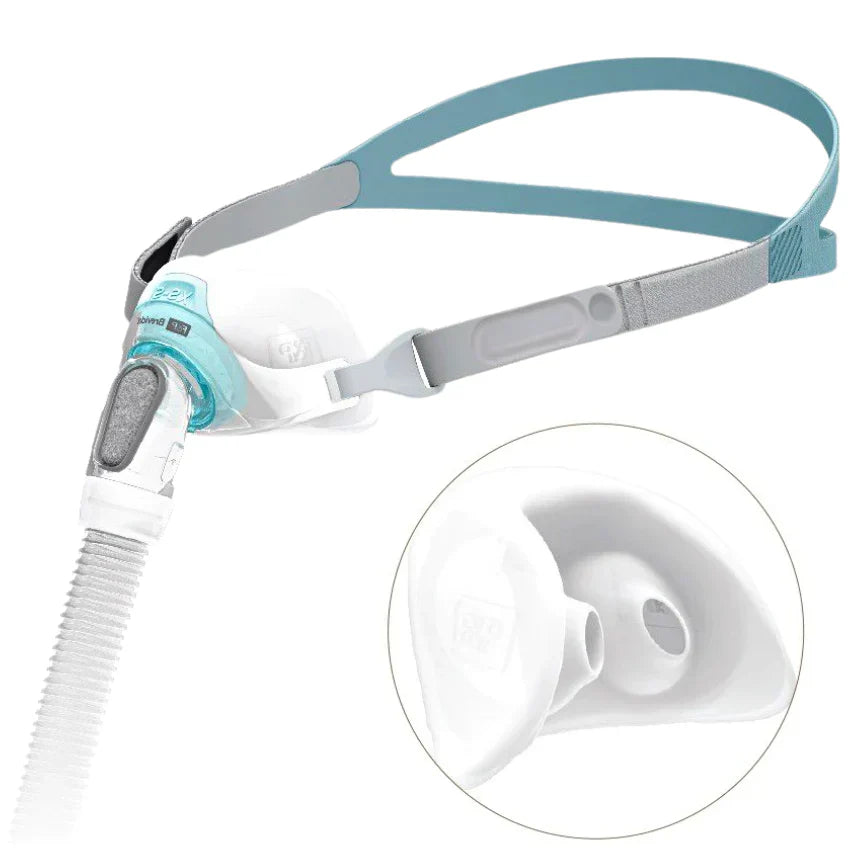For sleep apnea sufferers, Continuous Positive Airway Pressure (CPAP) therapy is their saving grace. An essential part of this therapy is the CPAP mask, which assists in airflow to avoid interruptions and facilitate a good night's sleep. In light of this, it is essential to ensure that the masks are properly cared for and appropriately accompanied by appropriate maintenance. The public must take appropriate care measures when handling their masks for proper cleaning and hygiene and possible extension of their usability.
The Importance of Cleaning CPAP Masks
CPAP masks have contact with your skin and respiratory system, so hygiene is a significant factor to consider. Cleaning your CPAP mask daily and maintaining hygiene, making the therapy comfortable and healthy.
Daily Maintenance Routine
Hence, carrying out a basic cleaning process of about five to ten minutes daily will go a long way to enhancing the life span of the mask used in the CPAP. Each time an individual is done using it, they should wash both masks gently with warm water and mild, non-scented soap. Do not use abrasive cleaners or cleaners containing alcohol, benzene, acetone, or other chemicals that could damage the mask's components. Wash off with water to wash off all soap remains, and let the parts dry on a clean cloth. That way, oils and dirt on the face can be wiped out while ensuring that the mask covers and operates as it should.
Weekly Deep Cleaning
In addition to daily washing, the mask has to be cleaned more thoroughly every week to retain its structure. Remove all the aspects of the mask and immerse it in warm water and an ideal CPAP mask cleaner. These cleaners are all designed to effectively remove buildup while safely and gently on the surfaces of the materials. After 30 minutes of soaking, rinse the container and use a soft brush to clean the corners and other areas that may have deposits. Remove the assembled dough, rinse each component thoroughly, and allow it to dry before making the next batch.
Regular Inspection and Replacement
Understandably, even the gentle use of a CPAP mask will not last forever. Everyone should check it frequently to prevent wearing signs that may compromise the mask's functionality—inspection for such signs as cracks, change of color, or a compromised seal on the cushion. Sometimes, after several uses of the mask in the therapy process, it may become a bit tight or uncomfortable, and you realize that it has leaking parts; it is high time that you replaced some parts or the entire mask. The whole CPAP mask or any of its components requires replacement every three to six months, depending on the usage and the prolonged care.
Storage and Handling Tips
Another aspect is how to store your mask, and this or that storage is the key to longer use in CPAP therapy. It's recommended to store your mask when not in use, in a clean, dry location, not exposed to direct sunlight or heat. Do not place the mask close to perfumes, cleaners, or other chemical products that might affect the material used. Furthermore, be careful with your mask during assembly and disassembly, which may cause unwanted destruction of its fragile parts.
The Role of Humidification
To CPAP users, especially those who operate the device in dry climates, using a humidifier will add moisture to the air, improving comfort. However, this extra moisture could also cause bacteria and mold growth on the mask and the tubing. Daily cleaning of the humidifier chamber and replacing the water reduces such risks.
Conclusion
Cleaning your CPAP mask is not just about the lifespan of the mask; it is about your well-being and the effectiveness of your Sleep Apnea treatment. To maintain your CPAP mask in good shape, use proper cleaning protocol to clean it daily, deep clean it weekly, and always perform appropriate inspections. The design and storage alone do not safeguard the mask from any harm; they help maintain the value of the mask to continue supporting and provide comfort for a sound sleep. Spending time in mask care improves the effectiveness of CPAP treatment.

